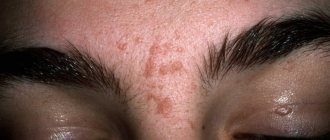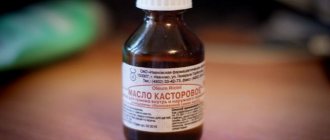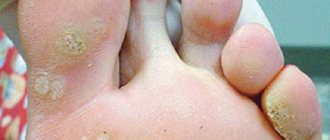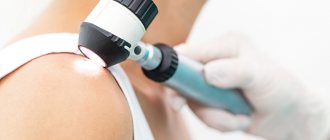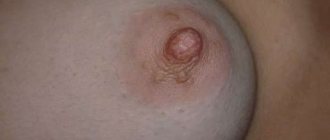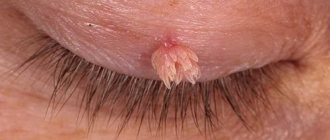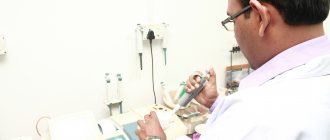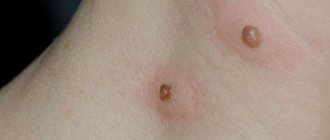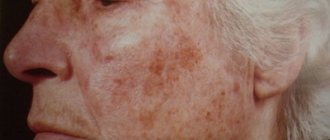Benign epithelial tumors - senile warts, age-related keratomas (photos in the article show the appearance of the formations). In most cases, this type of skin lesions is discovered after 40–50 years. The disease occurs equally in men and women. The cause is not precisely established, however, genetics and sun exposure are considered to be the main factors.
What are senile warts?
Senile keratomas appear after 50 years, when the skin becomes less elastic. Dry skin involves placing multiple growths on yourself at the same time. On the lower extremities, such neoplasms occur very rarely.
Keratomas occur regardless of gender. They mostly form in adulthood, but there are cases of their appearance at the age of 30.
Initially, such defects are the result of impaired pigmentation as yellow, light brown or dark brown spots of irregular shape and different sizes.
On this topic
- Warts
All about removing warts with nitrogen
- Inna Viktorovna Zhikhoreva
- September 27, 2020
Over time, some of them begin to grow and protrude above the skin in the form of convex plaques. Next, keratinized scales or rather loose nipple-shaped protrusions form on them.
The scales are easy to scrape off, and underneath they reveal papillary growths or a pink base that can bleed. The external description of keratomas is determined by the specific form of this disease.
Senile warts are a benign form of a precancerous condition, therefore, when they occur, it is necessary to contact a specialist and carry out a diagnosis.
About the disease
Senile warts are benign neoplasms that protrude above the skin and have a keratinized surface. Most often, their appearance can be observed after forty years. But there have been cases of growth of tumors in people of mature age.
Keratomas are dangerous because there is a risk of their degeneration into malignant tumors or squamous cell carcinoma. Therefore, you should not neglect such growths. It is better to consult a doctor, and if they do not pose any danger, carry out preventive diagnostics every few years. A senile wart does not go away on its own; the older a person gets, the greater the likelihood of noticing changes in the color, size, and contours of the growth. Males and females are equally susceptible to the disease.
Forms
Taking into account the cause of formation, as well as the formation, age-related keratomas are able to acquire a certain shape. At the moment, there are 5 types of senile keratomas.
Spotted
At this stage, a spot with increased pigmentation forms on the skin. It does not protrude above the skin, but has a somewhat flaky surface. The contours are round or unclear. It occurs in the form of a single growth or multiple neoplasms. Mainly found on the upper limbs, back and chest, and on the face.
Nodular
At this stage, the spot begins to protrude above the skin, its surface is smooth. Here individual scales can already be distinguished, but they fit very tightly to the lower layers. This stage is characterized by slow dynamics.
Plaque
Senile keratomas that take the form of a disc. They are flat neoplasms of irregular shape, but with outlined contours that are gray in color. Under the top dense crust, when scraped off, there is a lower layer. It may bleed.
Seborrheic
Individual plaques begin to merge together, their junctions resemble cracks. The top layer is very peeling. In some places the scales fall out and the formation bleeds.
At this stage, multiple keratomas are noted on the surface of the face and body. Such growths cause physical discomfort as they begin to itch and become inflamed. In such a situation, it is imperative to consult a doctor.
Cutaneous horn
The keratoma becomes keratinized. The scales protrude significantly above the skin and become dark brown or black.
This new growth resembles a mulberry or cauliflower. At this stage, the keratoma should be checked for benignity, as it can degenerate into a squamous cell form of cancer.
It is optimal to be observed by a specialist from the moment the first spot forms in order to control the situation.
Is there a danger?
Many people do not consider senile warts a serious disease, attributing them to age-related changes in the body. Indeed, these growths appear with age, regardless of the patient’s concomitant diseases. But, contrary to popular belief, they can
cause some discomfort. Without proper treatment, aging warts can become very itchy and inflamed. In the last stages of their development, they are easily torn off and bleed even with slight contact with clothing, which causes stiffness in the patient’s movements.
The main danger of keratomas is the possibility of developing oncology. Skin cancer is one of the most insidious diseases into which such growths can turn. The cellular structure of warts changes, and eventually the cells mutate so much that a malignant tumor appears.
Causes
The reasons for the formation of senile keratomas have not been established for certain. What is known is that they are completely different from warts (an abnormal growth of skin cells that is caused by HPV). The formation of these growths is influenced by the following factors:
- Excessive solar radiation. Large amounts of ultraviolet radiation negatively affect human skin.
- Inadequate diet and resulting deficiency of vitamins and minerals.
- Seborrhea. A skin condition caused by increased activity of the sebaceous glands.
- Frequent trauma to the skin either mechanically or through chemicals.
- Genetic predisposition.
The origin of senile keratomas is not viral. They are formed as a result of age-related malfunctions of the skin. Everyone is susceptible to the disease, regardless of gender.
How are they different from common warts and other skin diseases?
It is necessary to understand the difference between concepts such as keratoma and papilloma.
- Papillomas are benign tumor-like formations caused by HPV (human papillomavirus). This virus provokes the development of genital warts, accompanied by low, medium and high risks of oncological degeneration. Removing papillomavirus is not easy: this requires the use of immunomodulators, vitamin complexes, procedures such as electrocoagulation, laser treatment, cryodestruction;
- Seborrhea can be a predisposing factor to the development of keratomas. Such neoplasms are not of a viral nature; their elimination requires the use of other treatment methods.
An in-person consultation with a doctor is required to differentiate senile keratomas from common warts, papilloma, follicular keratoma, melanomas, basaliomas, nevi (blue, complex, borderline, etc.). Each of the dermatological pathologies has its own causes, characteristic symptoms and possible complications. Therefore, it is recommended to refrain from self-diagnosis and self-medication. At the first signs of disturbances, you should consult an experienced doctor.
Symptoms
The exact laboratory picture depends on the stage and type of senile wart. However, it is possible to identify common features:
- spots on the skin in a specific place that are light or dark in color.
- Elasticity, then coarsening of the top layer of the stain.
- An increase in plaques during the development of the disease.
Age-related keratomas are formed in this way:
- The appearance of spots. One or several areas form on the skin, which are covered with a large number of brown spots (light or dark in color). Then there are more growths and they cover a larger area. At this stage, no keratomas are observed.
- Formation of papules. Papules are observed on the skin - small nodes that protrude somewhat above the dermis. Papules appear only in those areas that are covered with brown spots.
- Keratotic form. At this stage, the spots begin to harden and turn into keratoma. A large number of brown growths form on the skin, which protrude above the dermis. During scraping, the keratome bleeds.
- Formation of cutaneous horn. The top layer of the growth becomes coarser. Cellular layers lead to the fact that the keratoma rises even more above the skin, but the growth ends at 0.6-0.7 cm.
Appearance and distribution on the body
With age, numerous warts may appear on the human body.
Keratomas cannot occur except on the mucous membranes, palms and soles. All other places on the human body are susceptible to this unpleasant disease.
They can be located either singly or grouped into fairly massive associations.
The color of the spots (initial form) can be flesh-colored, brown, yellow or black.
Often at all stages of development they are covered with scales. They are easily removed, after which the base may bleed.
The appearance and size largely depend on the stage of progression of education.
Diagnostics
Based on the appearance of the growth, it becomes clear that this is a senile wart. However, before removing age-related keratomas, the growth should be examined. It must be distinguished from other types of keratomas, neoplasms caused by HPV, and melanoma.
The main diagnostic method is biochemical analysis. To carry it out, you need a biopsy - taking a fragment. To exclude HPV as the root cause of the formation of a neoplasm, sometimes PCR is needed - diagnostics that can exclude the DNA of the pathogen in keratoma cells or show its absence.
Prevention
To prevent the appearance of age-related keratomas, you should follow the following recommendations:
- Avoid prolonged exposure to direct sunlight and use sunscreens and sprays with a high level of protection.
- Minimize exposure to stressful situations.
- Promptly treat emerging dermatological diseases, including seborrhea.
- Enrich your daily diet with fresh fruits and vegetables, vegetable oils, especially flaxseed - a source of essential high-density lipoproteins.
- Give preference to moderate physical activity.
- In spring and autumn, take multivitamin complexes that contain ascorbic acid.
- Maintain a work-rest schedule, get enough sleep, and spend more time in the fresh air.
If warts form, you should never try to remove them yourself at home using poisonous medicinal plants or medications.
Treatment
Senile warts do not cause any particular pain, but, for example, the aesthetic side (when the tumor is located on the face or neck) can cause some discomfort.
On this topic
- Warts
All about the radio wave method of wart removal
- Inna Viktorovna Zhikhoreva
- September 27, 2020
It is possible to get rid of such growths through vitamin therapy in combination with medications. Also, when the keratoma is located in a place where friction occurs all the time and there is a risk of injury, it is necessary to consult a doctor regarding possible removal.
But we must remember that certain forms of growths can degenerate into a malignant formation. Under the guise of an ordinary stain, a dangerous disease may be hiding.
Drug treatment
The drug effect has a number of limitations that are associated with the presence of concomitant diseases in the patient. Therefore, it is necessary to treat growths under the supervision of a specialist; independent therapy can provoke dangerous complications.
The following medications are mainly used:
- High dosages of ascorbic acid. The use of such doses is dangerous and is fraught with the formation of kidney stones and exacerbation of gastritis. Therefore, after 7 days, when the drugs are used in large quantities, it is necessary to switch to maintenance treatment. It is carried out in courses lasting 2-3 approaches over a month. It will not be possible to eliminate keratomas; it is only possible to slow down or stop their development.
- Hormonal ointments: Flucinar, Fluorocort, etc. They help reduce inflammation and stop the development of pathological cells. Such ointments are used during a specific period, otherwise they can cause negative changes in the skin.
- Other ointments: Solcoderm, Prospiridine ointment, Collodion. Help stop the pathological process.
- Biolit-ELP. This ointment has a brown tint and is made from an extract of medicinal herbs that can delay the development of benign growths. Has anti-inflammatory and restorative effects. Apply every day to the keratoma for 10 minutes, after which the residue is blotted with a paper napkin.
Before starting therapy, you should consult your doctor to avoid adverse effects.
Removal
A direct indication for the elimination of such neoplasms is their malignancy. But there are often situations when a wart is removed for other reasons. The removal itself must be approved by the treating specialist.
On this topic
- Warts
All about laser wart removal
- Inna Viktorovna Zhikhoreva
- September 27, 2020
To get rid of the growth, the following techniques are used:
- Medical laser treatment. Since the appropriate equipment is available in many modern medical institutions, this method is affordable and effective. The beam has a cauterizing effect. As a result, part of the skin with the keratoma will evaporate. This helps eliminate the risk of relapse.
- Radio wave therapy. This method differs from laser treatment in its high cost. The principle itself remains the same - one-time removal of age-related keratoma.
- Cryotherapy. A specialist uses liquid nitrogen to treat the spot, and then the neoplasm gradually dies and healthy skin grows.
- Surgical removal. The “oldest” method of therapy, however, is almost never used due to the increased likelihood of injury. The technology is simple - a specialist excises the growth using a surgical scalpel and applies a suture. When it is removed, scars often remain on the skin.
What causes age-related changes in the skin on the face in women?
The beautiful half of humanity suffers over the years for the following reasons:
- During perimenopause, the amount of collagen decreases. Because of this, the fat layer decreases - the skin loses its elasticity and “deflates”.
- Due to collagen deficiency and hormonal changes, skin elasticity decreases. It sags in the neck, chin and cheeks, and lines and wrinkles appear in the forehead and above the lip.
- Expression wrinkles become more pronounced - the corners of the lips droop, the face takes on a tired expression.
- The same hormonal disorders lead to age-related pigmentation on the face, arms and chest.
